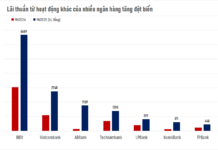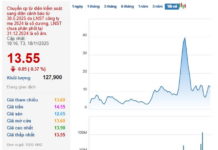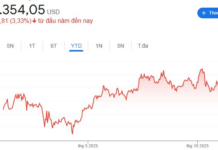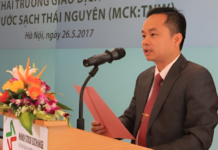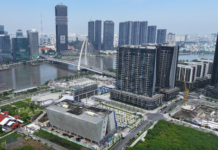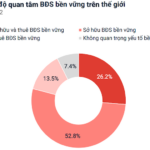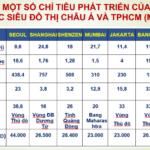Ho Chi Minh City Elevates Binh Phuoc 1 Bridge by 1.25 Meters
The Binh Phuoc 1 Bridge on National Highway 1, spanning the Saigon River in Thu Duc City, Ho Chi Minh City, has long been a significant bottleneck for waterway traffic due to its clearance of less than 7 meters, which fails to accommodate larger vessels.
With a length of nearly 480 meters and a width of over 11 meters, the bridge has posed challenges for inland waterway transportation—a key focus for Ho Chi Minh City to reduce road congestion.

Close-up of Binh Phuoc 1 Bridge. Photo: Bao Cong Ly
To address this issue, Ho Chi Minh City has invested 133 billion VND to raise the bridge’s clearance, enhancing waterway traffic flow, promoting inland waterway transport, reducing congestion, and improving connectivity in the Southeast region. The hydraulic lifting method was chosen to avoid dismantling or rebuilding, saving time and costs while ensuring safety.
According to transportation experts, elevating the Binh Phuoc 1 Bridge has implications beyond the local area. It is a strategic move to expand the waterway corridor on the Saigon River, increasing cargo capacity via inland waterways—a cost-effective, eco-friendly alternative that reduces pressure on road infrastructure. Additionally, the waterway connecting Southeast provinces will become more seamless, boosting regional logistics competitiveness.
Previously, the Binh Trieu 1 Bridge in Ho Chi Minh City was also raised by 1.08 meters and is currently undergoing adjustments.
Engineering Marvel Paves the Way for Modern Waterway Transport
Binh Phuoc 1 Bridge is the second bridge, following Binh Trieu 1, to employ synchronized hydraulic lifting technology, developed and implemented by Vietnamese engineers. This technology utilizes over 100 high-capacity hydraulic jacks, each bearing 400–500 tons, controlled by a centralized computer system with an accuracy of less than 1 mm. The entire 11,000-ton bridge structure will be raised by 1.25 meters.
Starting October 17, 2025, the project entered a critical phase: gradually raising the bridge. By November 10, the Binh Phuoc 1 Bridge is expected to reach its new height, with the entire lifting process scheduled for completion by November 16—marking a successful transformation for the over-20-year-old bridge.
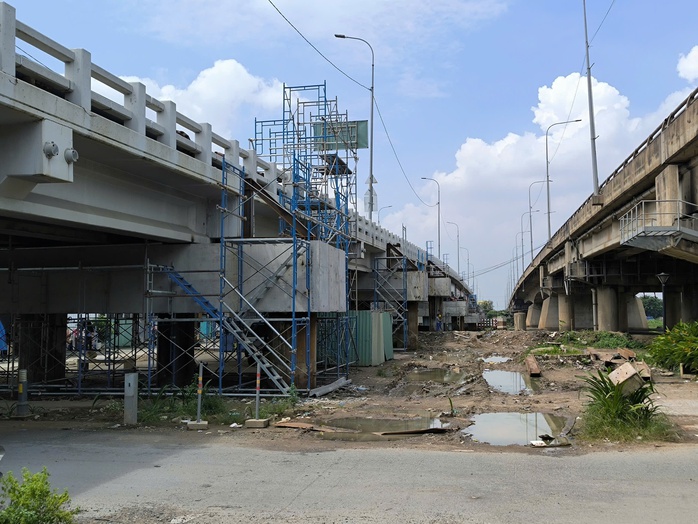
Photo: Bao NLĐ

Close-up of the clearance elevation process of Binh Phuoc 1 Bridge. Photo: TPO
Following the elevation, the project will proceed with reinforcing the bridge cap, pier bearings, load testing, and completing the bridge surface and approaches, ensuring official operation by the end of 2025.
Notably, the construction process has been carefully managed: motorcycles continue to use the bridge normally, cars are rerouted to a parallel bridge, and temporary ramps have been installed at both ends to minimize disruption to residents.
Raising the bridge by 1.25 meters not only enhances its technical capabilities but also elevates its role in Ho Chi Minh City’s transportation network. Once a bottleneck, the Binh Phuoc 1 Bridge is now a symbol of Vietnamese engineering prowess and a vital link in the city’s modern inland waterway transport strategy.
Phat Dat Acquires Dai Quang Minh’s 239 Cach Mang Thang 8 Project
Phat Dat Real Estate Development Corporation (HOSE: PDR) has announced an extraordinary disclosure regarding the acquisition of all shares held by Dai Quang Minh Real Estate Investment Corporation in AKYN Investment Trading Service Corporation. This strategic move is aimed at developing a VND 5.5 trillion apartment project.
$4.5 Billion Metro Lines Set to Transform Ho Chi Minh City’s Gateway, Boosting Local Real Estate Market
The Metro Line No. 1 (Binh Duong New City – Suoi Tien) and Metro Line No. 2 (Thu Dau Mot – Ho Chi Minh City) are prioritized for early investment, with a combined total investment of over $4.5 billion.





